Commentary: How dancing through rain and mud helped relight the lost fire of Burning Man
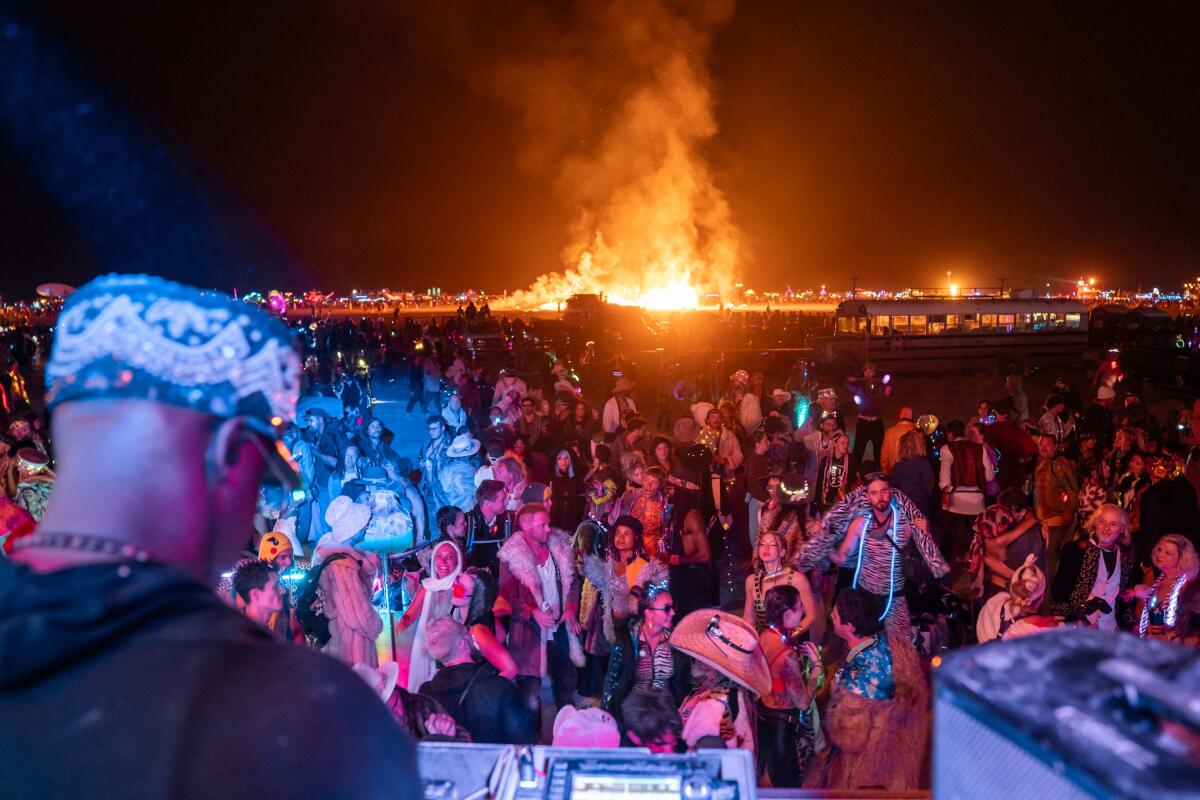
There are many grandiose, outlandish and incomprehensible things one may witness at Burning Man. After a debaucherous night that bleeds into morning, you might stumble upon saucy, deep-fried ribs served with Champagne on the dance floor at 6 a.m. You could also hop on a Technicolor hot air balloon that’s carrying goggle-bedecked revelers in the throes of a psychedelic bender.
For a cathartic experience, there’s the temple, one of Burning Man’s most extraordinary architectural feats where I wept over a shrine I made for my late parents as a man nearby wearing nothing except a rainbow tutu comforted grieving companions, and grimy hip-hop blared from an art car outside. You may even seek refuge from a dust storm by climbing into the rear orifice of a pink unicorn, erected on Black Rock City’s lunar-like terrain. But there was one thing at this year’s Burning Man that many veteran attendees and I never expected to see: miles of viscous mud.
In the antediluvian days of Burning Man 2023, my goals were the same as most: find my friends, make new ones, explore, ride my bike, see art, hear music, dance and party — all of which I accomplished with gusto. The days were warm and dusty, a hallmark of the landscape whose dried-up lake bed, known as the playa, consists of a caustic alkaline dust akin to the texture of flour. By Day 1, everything — clothes, shoes, skin, face, hair, camping gear, disco balls — becomes painted in the gray-white dust.
I spent the pre-dawn hours of Friday morning swaying on the dance floor to the electronic South African duo Goldfish as a delicate drizzle sprinkled through the lasers like playa-friendly glitter. There were murmurs of an oncoming storm that no one took seriously, so the partying continued. When I was overcome with exhaustion, my sway morphing into a semi-conscious stupor, I knew it was time to go — the only thing separating me from my air mattress being a vast alkali flat. As I was towed on the trunk of my friend’s electric tricycle ridden by my partner, we, along with another bone-weary friend, hit a bulwark of dust. Moving slowly and dinging our bells to prevent collisions, the spectral silhouette of the temple appeared like Brigadoon, and we sought refuge next to an ethereal flautist to wait out the white out.
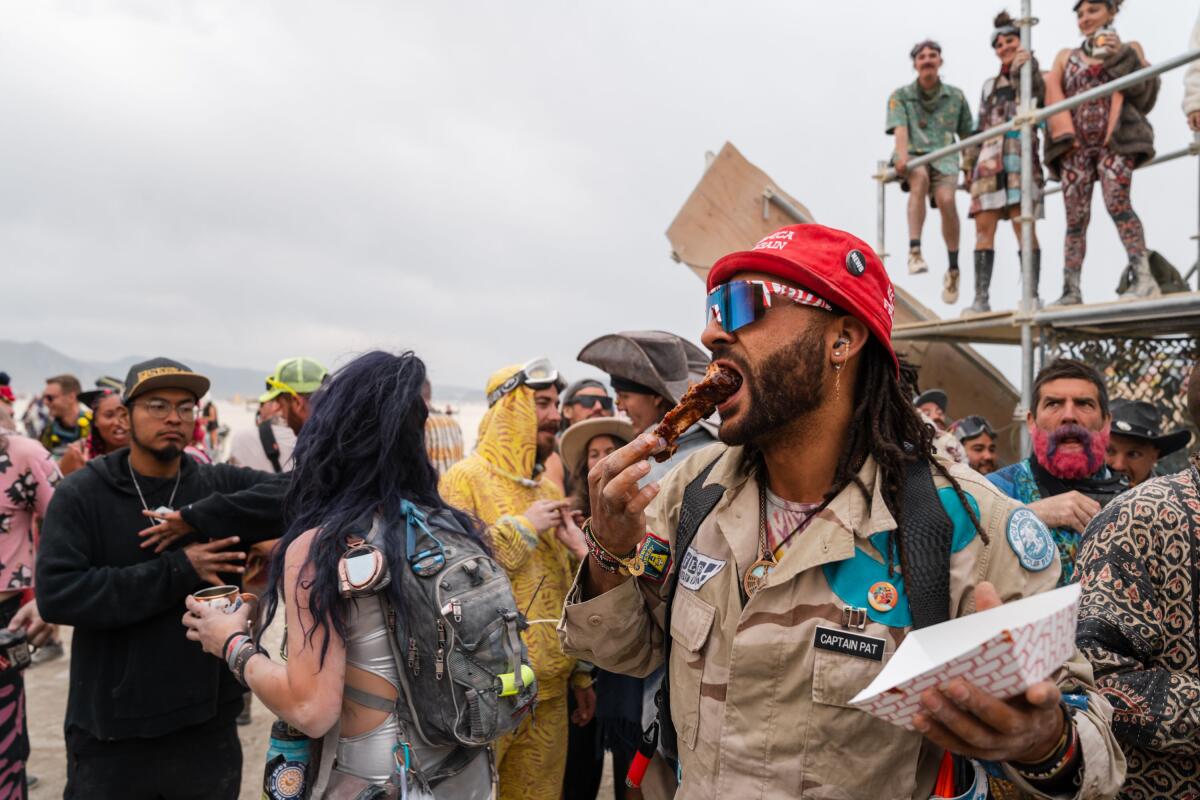
When I finally reached my bed, the sun was up, but instead of azure, I saw every shade of gray in the sky. The ribs and Champagne party was in full swing at camp, so I took a nap, woke up just long enough to devour three succulent ribs, and went back to sleep. That was the last time I saw the playa in its proper, dusty form.
A few hours later, I awoke to the alluring sound of crackling bacon but quickly realized it was rain beating on my tent. When I unzipped the door to peer outside, I was stunned by the transformation. Deep trenches of mud filled with brown vibrating water had formed between the tents. Pillows, rugs and shoes left outside had vanished into the morass, their tassels and laces poking through the mud like the bones of animal carcasses. Displaced campers wandered about in a saturated daze, searching for dry sanctuary. As I looked around at the disarray, my first thought was, “Why did I come here again?”
The last Burning Man I attended was in 2016 but even then the cracks in the foundation were beginning to show the dichotomies of the festival’s dystopian utopia. While its city planning has been lauded by Nobel-laureate economist Paul Romer, who told the New York Times that the world needs more “Burning Man urbanization,” it has also been criticized for its carbon footprint.
Because of the massive amounts of travel in and out of the event, and the hundreds of gas- and diesel-burning generators, Burning Man produces about 100,000 tons of carbon dioxide each year, according to Vox. This was one of the issues that drove the climate protesters known as Seven Circles to block the ingress road with a 28-foot trailer, much to the ire of weary travelers, many of whom had spent hours, if not days, driving to the festival.
While Burning Man and its attendees pride themselves in their leave-no-trace tenet — by disassembling camps, installations and stages with the intent of leaving the land better than it was— the negative environmental impact of more than 70,000 people appearing then disappearing in a desolate natural reserve is unavoidable and undeniable. Regardless, the leave-no-trace mentality of (most) attendees and the meticulous cleanup executed by volunteers for several weeks after the event, is far beyond what most large-scale festivals accomplish.
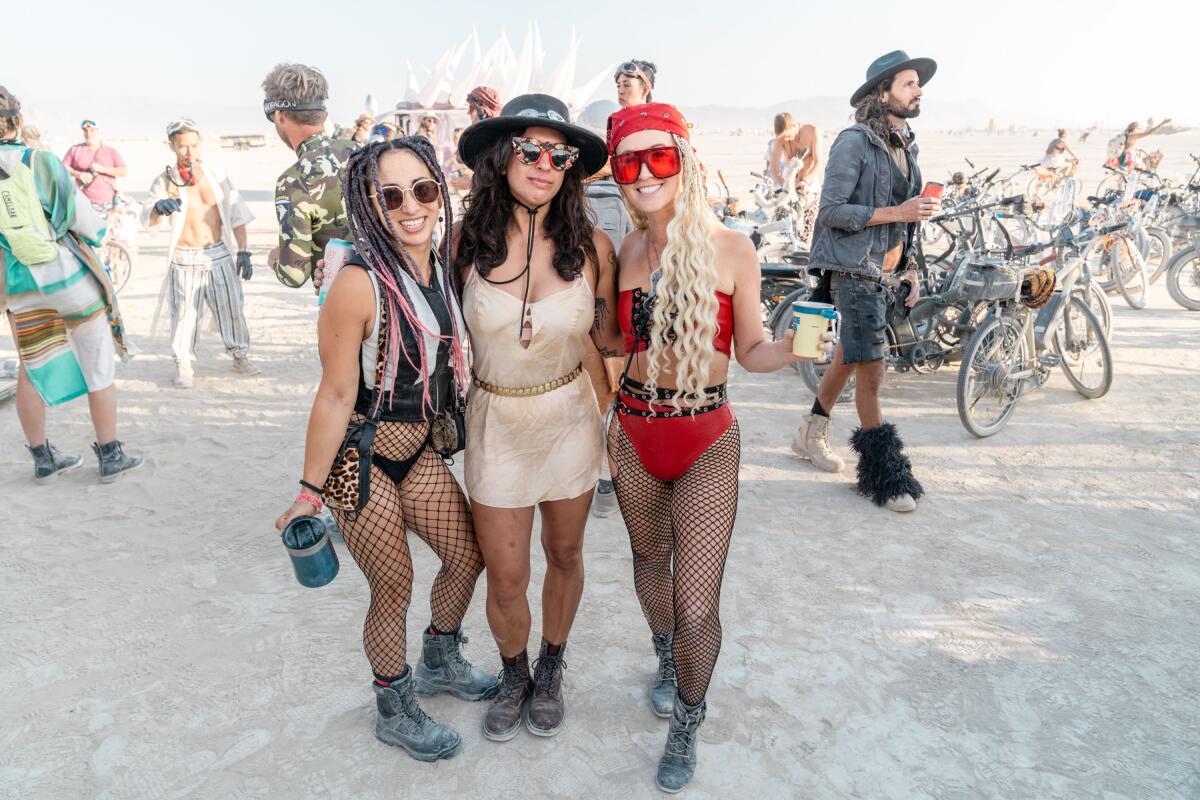
Another one of Burning Man’s principles is the idea of radical inclusion, welcoming people from all creeds, backgrounds, lifestyles and persuasions. Are you a nude dancer whose act includes smearing a roasted marshmallow on your labia? There’s a camp for that (and yes, I witnessed it). Have you toyed with the idea of participating in an orgy? There’s a camp for that too. Are you looking for a nonconformist family vacation that teaches your kids radical self-reliance, self-expression, decommodification, participation and survival? Off to Burning Man you go. But as the years progressed and Burning Man became more of a social media sensation than a social experiment, critics and veteran burners alike caterwauled that the event’s ethos had lost its way.
Despite their principle of radical inclusion, I have heard many a burner chastise those who prefer the luxuries — like air conditioning and showers — of a so-called “plug-and-play” camp (read: me) over living like a survivalist-meets-doomsday-prepper. The reason for this disdain is that those who prioritize the party and spectacle over the communal effort required to build a temporary city with zero infrastructure have often left a trail of moop (or “matter out of place,” which is defined as anything that is not playa dust, organic or otherwise) in their wake and contribute little, if anything, to the community, the building of the site, camp maintenance and cleanup.
Known in the Burning Man vernacular as a “sparkle pony,” this entitled attribute is more about virtues (or lack thereof) than personal preferences. Though I was indulged by a power drop that fueled the luscious air conditioning in my palatial Shiftpod tent, I still practiced radical self-reliance and found myself ankle deep in mud and water, yanking out baked-in tent stakes with a crowbar and chiseling rugs, strands of hair, sequins and petrified socks out of the partially hardened mud.
Sparkle pony or not, this year proved that even with lavish accommodations like RVs and power drops, Burning Man is a bestial experience — which is apropos considering the theme this year was “Animalia.” Even in idyllic weather, you are battling disorienting white-out dust storms that can maroon you in the middle of the playa at 3 a.m.; getting struck by an urgent need to defecate while dancing on a dragon art car with no porta potties in sight; and schlepping several bags of putrid garbage in your vehicle as you wait in the exodus line for more than five hours while you’re on two hours of sleep and smell like a Sasquatch’s armpit. But when the heavens unleashed a furious deluge Sept. 1, the once-maligned dust and everyday challenges of life on the playa suddenly became nostalgic facets for which we yearned to return.
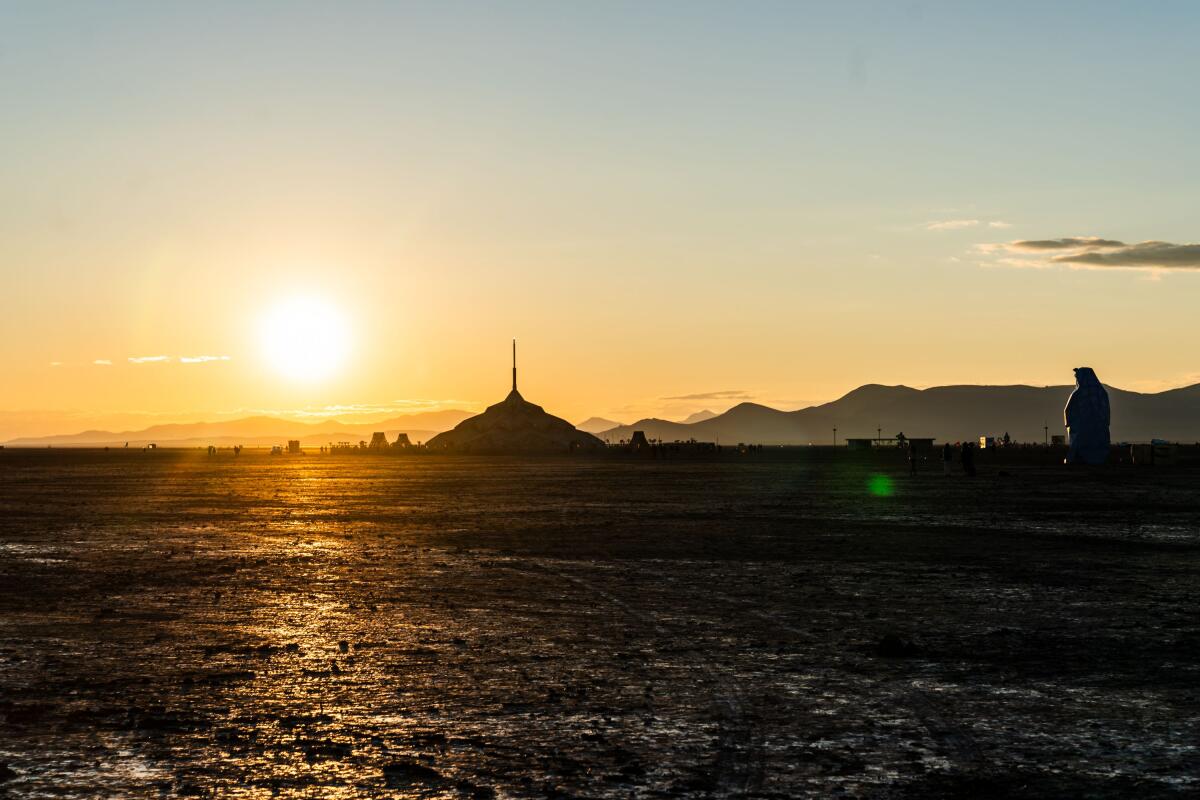
As rumors ripped through the media and most of us were left without power, Wi-Fi and human waste-removal services, whispers of “national emergency” and “ebola” circulated through camp. While the first night of torrential rain killed morale — with some of my campmates’ tents flooded by several inches of standing water, their clothes, food and bedding soaked, and people getting electrocuted by waterlogged extension cords — the following day saw burners at their best.
With some donning trash bags taped over their shoes, a sock pulled over a trash bag pulled over a sock, or others just going barefoot, our camp leader called an emergency meeting that roused us with hope and purpose. We split into groups and went into triage mode, pooling our soon-to-molder perishables (due to the unavailability of ice) to prepare a mishmash camp meal of pickle and hot dog skewers, charcuterie and tacos. Some were tasked with pulling electrical cords out of the mire while others attempted to tidy up the bedlam. There was also a foot care station, where soggy campers could discuss their preferred mud-fighting footwear techniques while having their feet cleaned, freshly socked and wrapped in plastic—all of the resources being donated by fellow campers.
While many were in dire straits and I was lucky enough to have a relatively dry tent (though my bedding was wet), I decided to shelter in place until the terra became firma again, extending my stay for two days. Many who panicked and attempted to escape mid-maelstrom were stranded far from their camps, either forced to abandon their vehicles and walk back, or be adopted by nearby camps until they could be extracted.
As concerned texts slowly began to trickle in, I realized how much the outside world’s (called the “default world” by burners) perception differed from my experience. Music continued to throb from the tentacles of the octopus-themed camp next door, laughter and boisterous chatter echoed throughout the landscape, a friend’s wedding that was scheduled the night of the storm was relocated from deep playa to their muddy campsite, and because bikes were useless in the bog, determined burners tramped through the goop to see art installations, find loved ones and help those who were struggling. Unsurprisingly, there was no shortage of mud-glazed frivolity as the more carefree (or inebriated) burners rolled, played and wrestled on the sodden playa, à la Woodstock.
By the time Black Rock City more-or-less dried Monday and the art cars prepared to collectively enshrine the eponymous “man” before his two-day-late conflagration, it felt as if the storm was just a bad dream, already forgotten. Even those who experienced tribulations far worse than mine, cheered and guffawed with bottles of Champagne in hand, dressed in their most outrageous, albeit crusty, Burning Man finery.
When the man finally exploded into a mushroom of flames followed by a fireworks show that made Disneyland’s display look like a Roman candle in comparison, I felt the profound fortitude and resilience of the burner community. Faced with calamity, we banded together, danced in the mud, and partied until dawn. We helped, comforted, fed, housed, clothed, hydrated and intoxicated each other — and we not only survived, but prevailed. It was at that moment that I remembered why I had come. I arrived at our large camp called Frothin’ Village knowing only a handful of people and left in tears as I watched my newfound family fade in the rearview mirror.
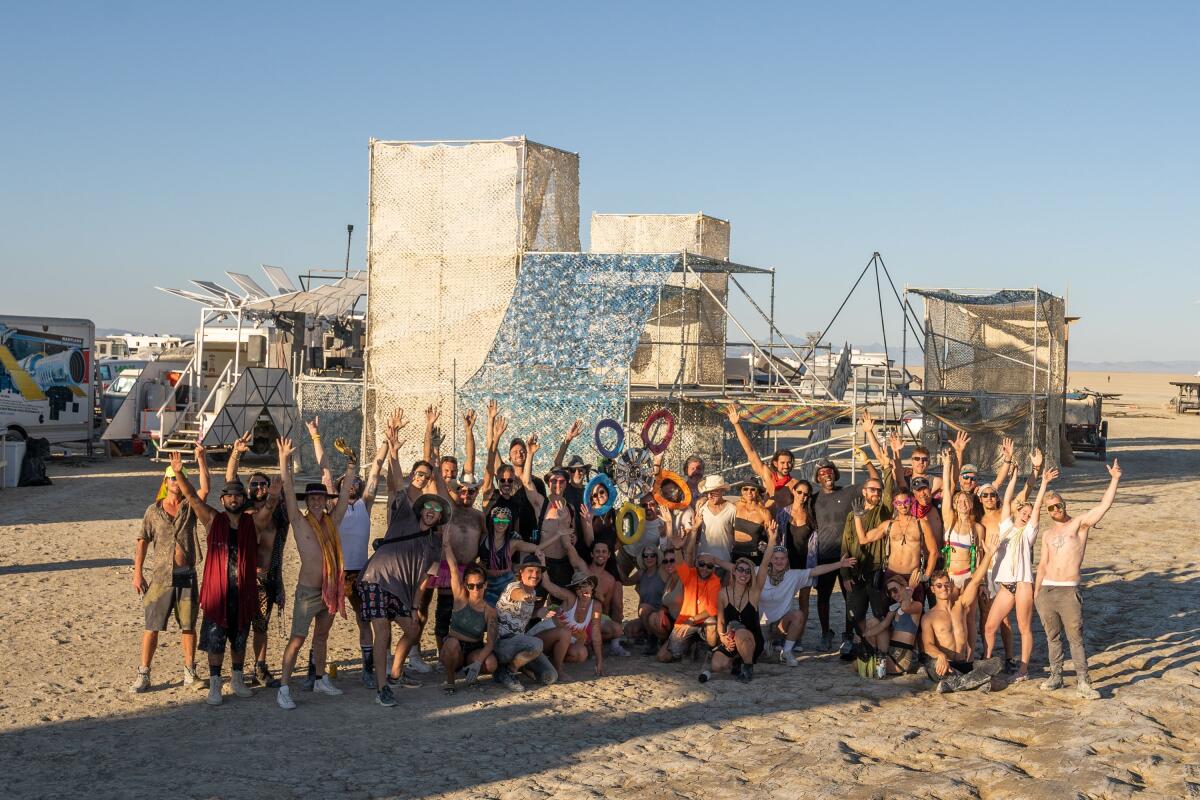
Since not all burners are created equal, many who committed to striking their camps left silently in the night, in some instances leaving behind heaps of trash, fossilized rugs, camping gear, human waste, mired vehicles and abandoned people. While cleaning camp, my partner even found a desecrated crystal decanter filled with urine. There were, however, others who stayed to lend a hand — the atrocious state of the playa notwithstanding.
This, unfortunately, is an inevitable symptom of humanity’s innate duality because where there are people, there are problems — but there are also solutions. If anyone can unify, meet the challenge of a natural disaster and have a ball while doing it, it’s burners. For those who believe that Burning Man has veered from its ethos, I am here to assure you that there are still plenty of people who are resolutely dedicated to righting its course.
More to Read
The biggest entertainment stories
Get our big stories about Hollywood, film, television, music, arts, culture and more right in your inbox as soon as they publish.
You may occasionally receive promotional content from the Los Angeles Times.










